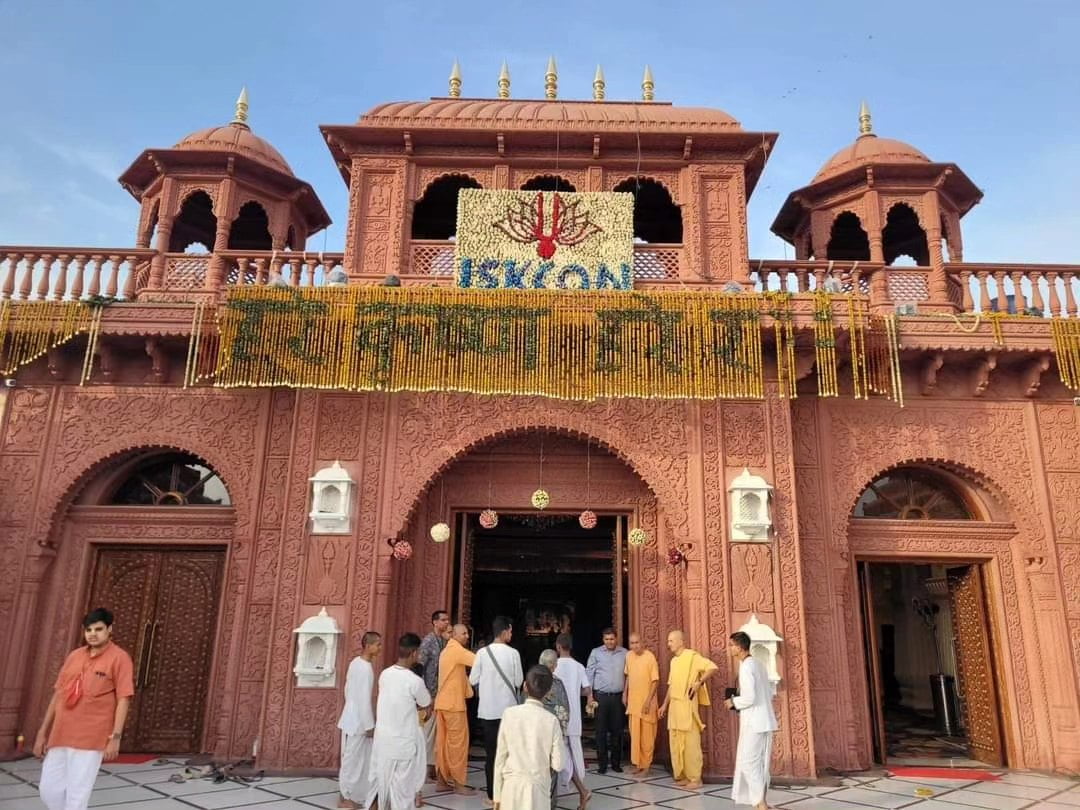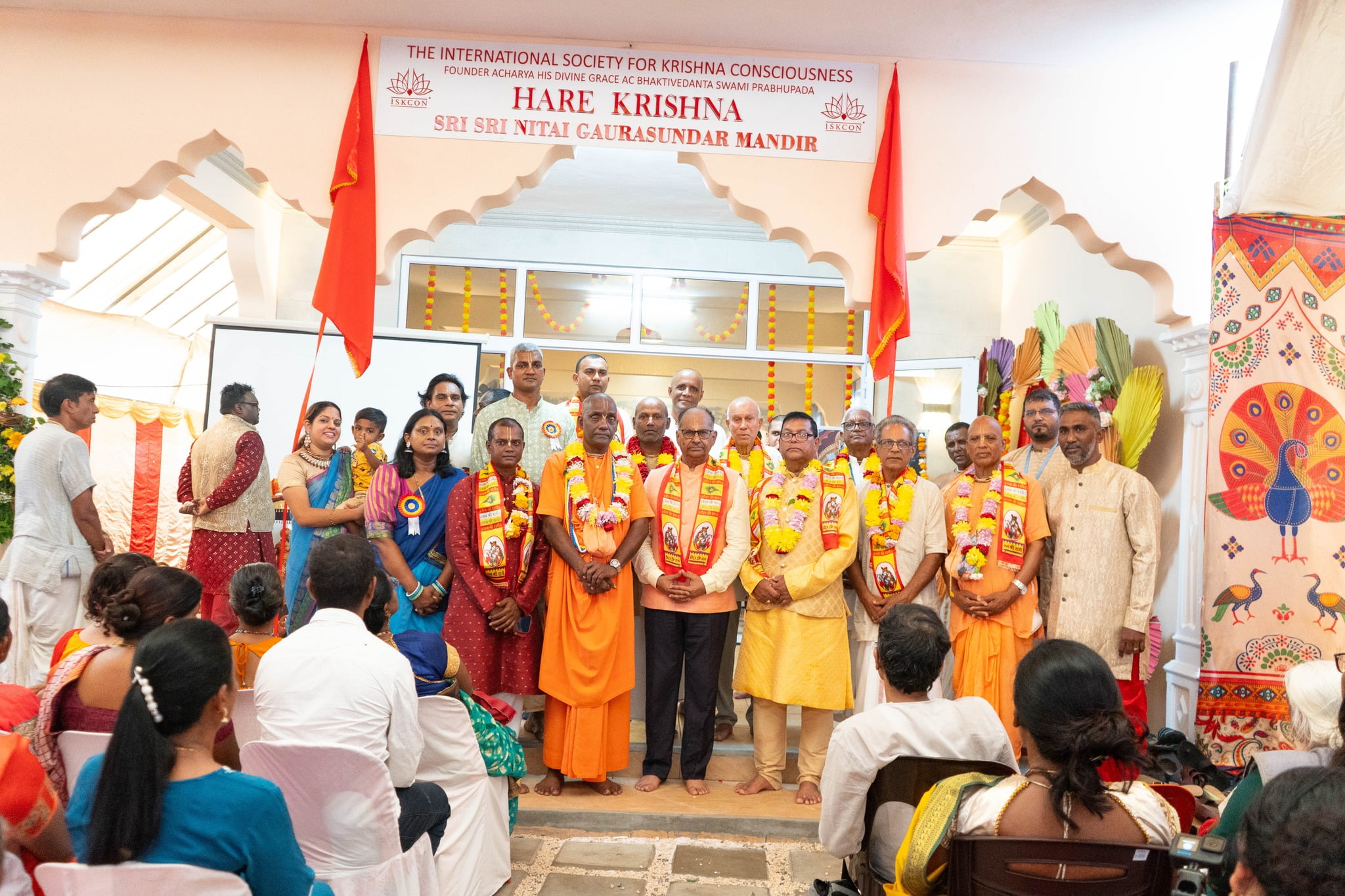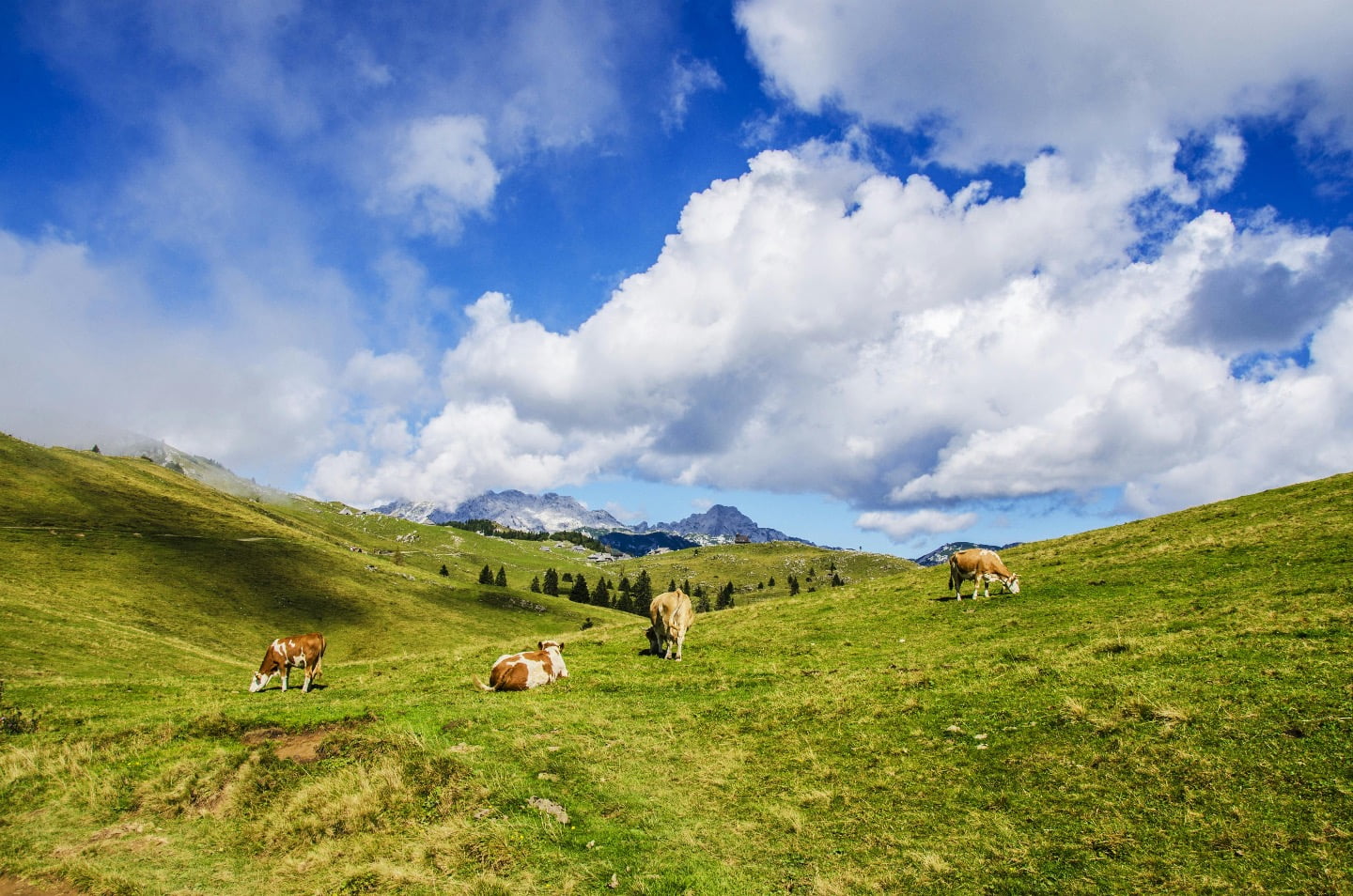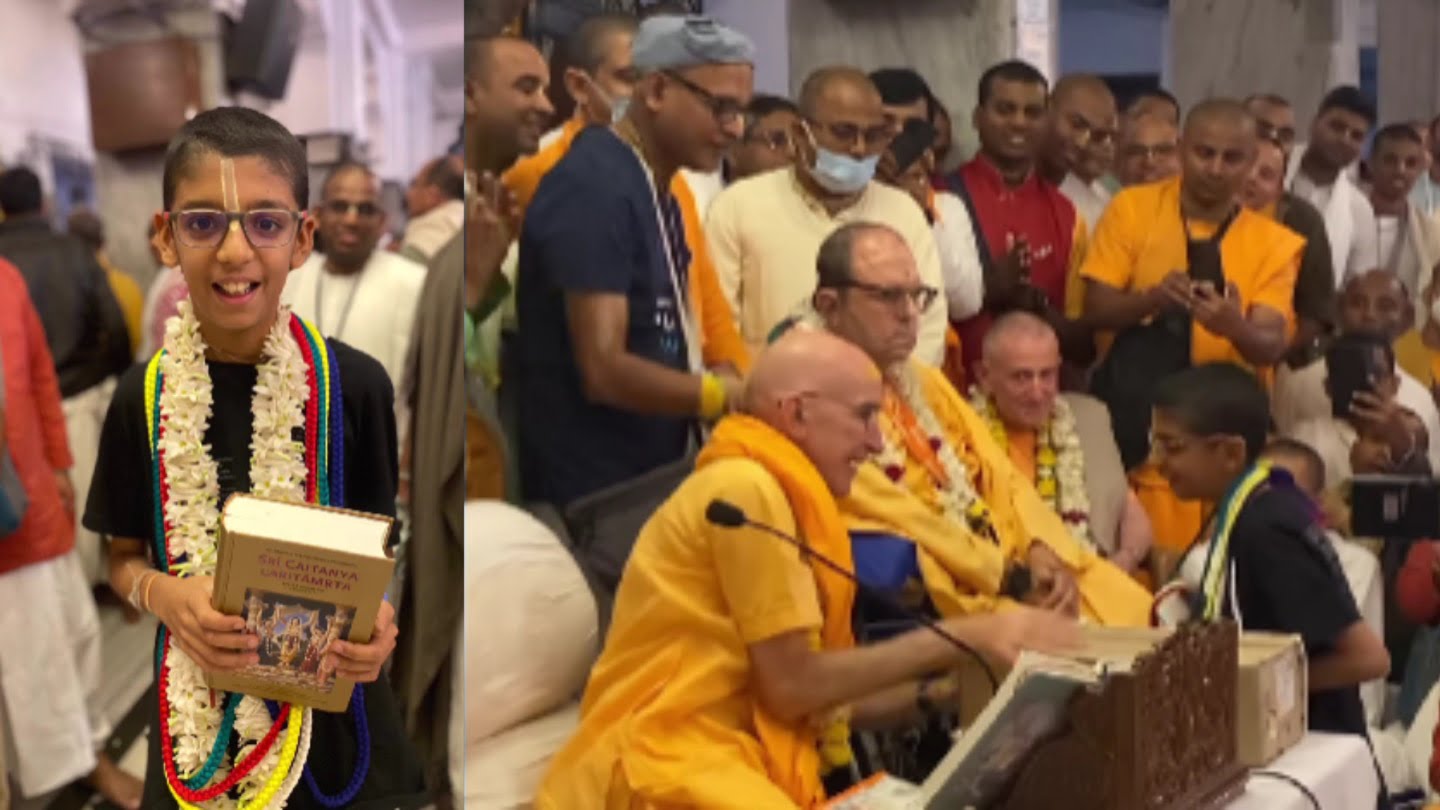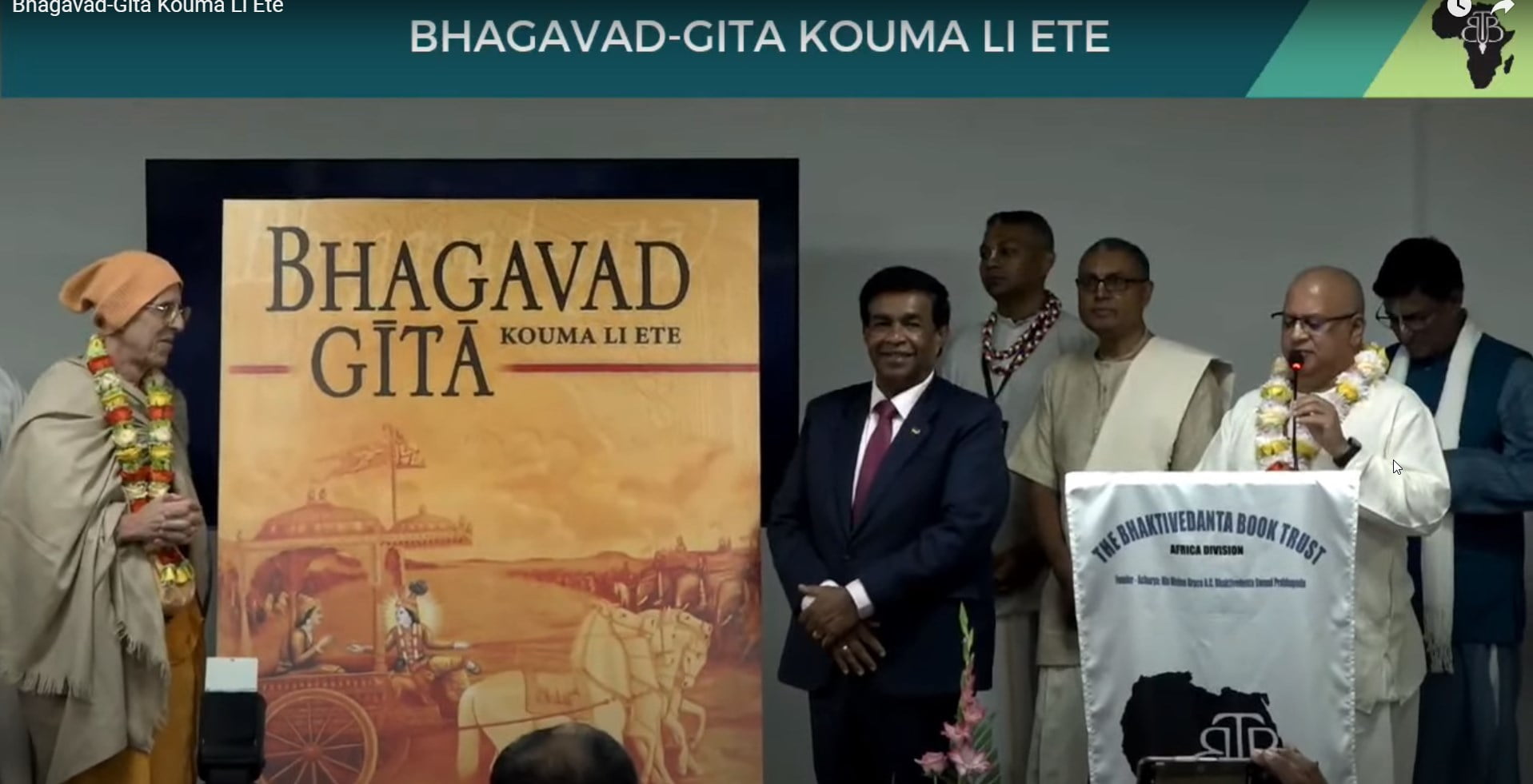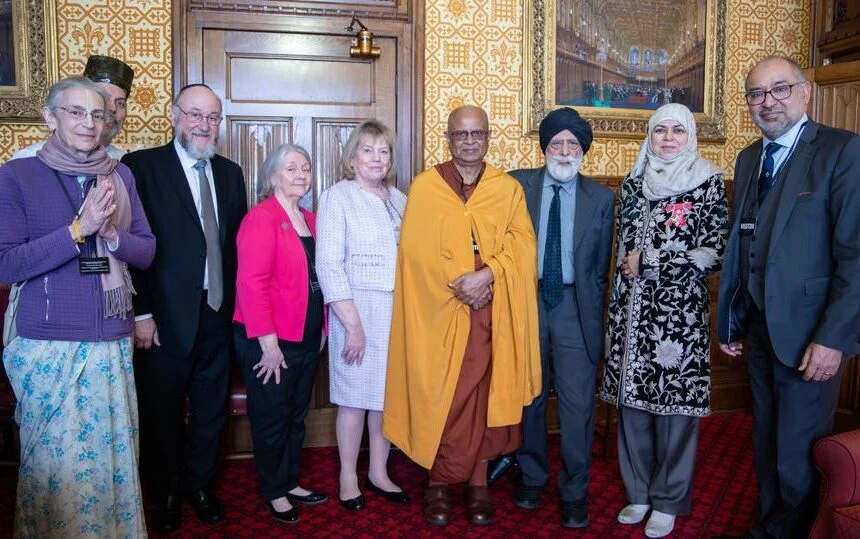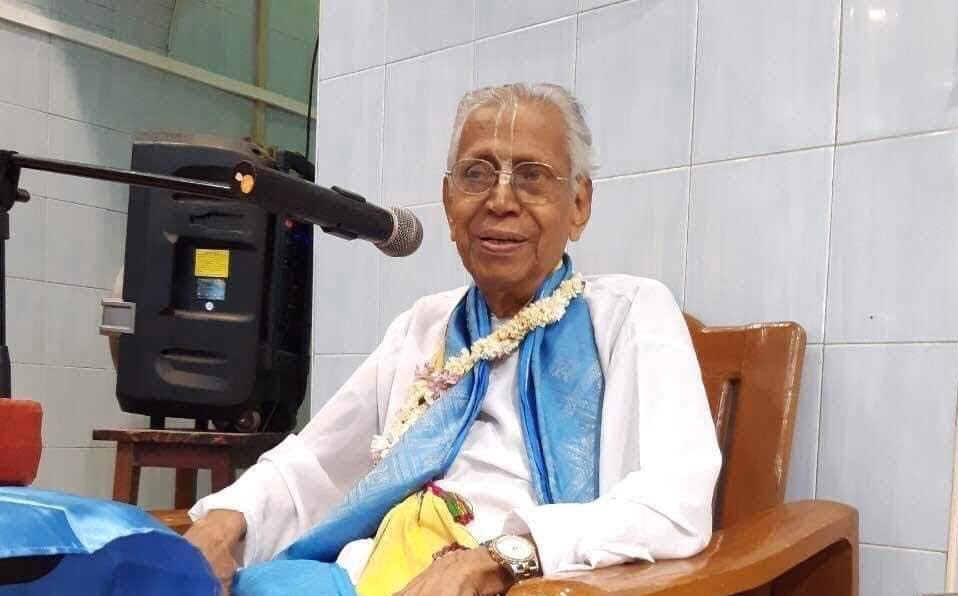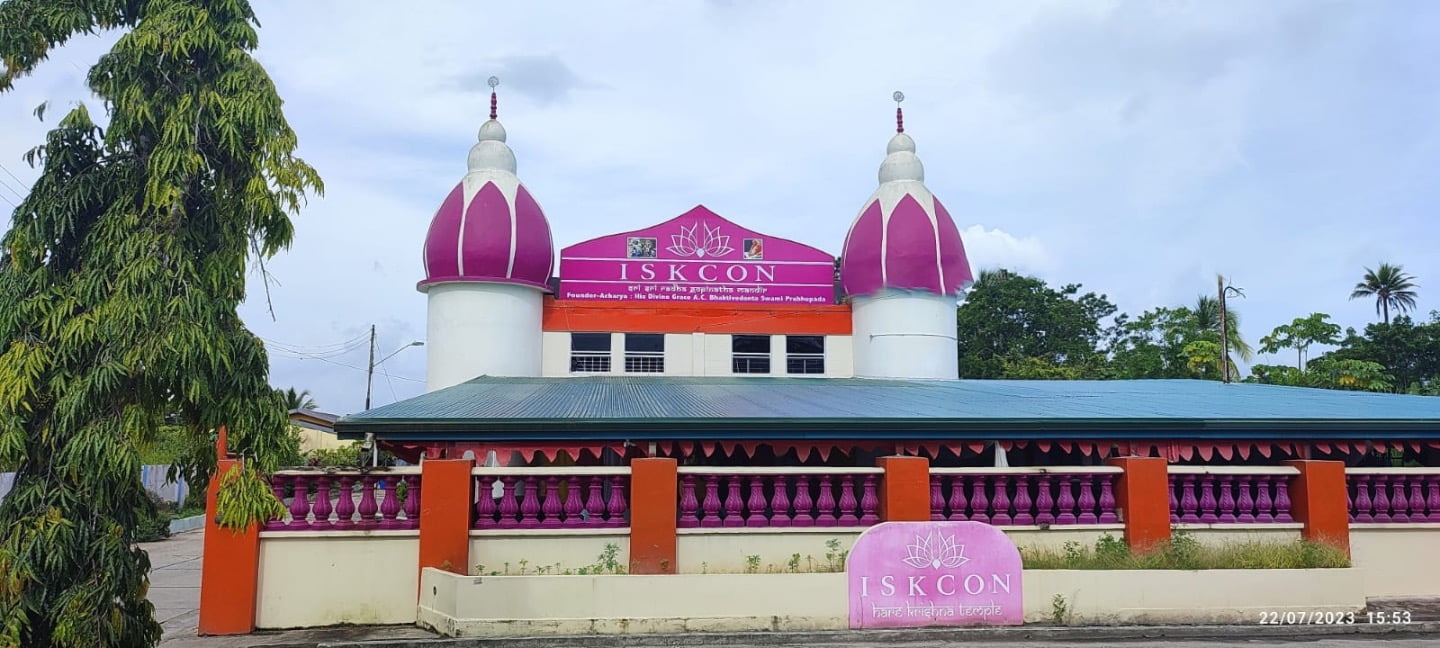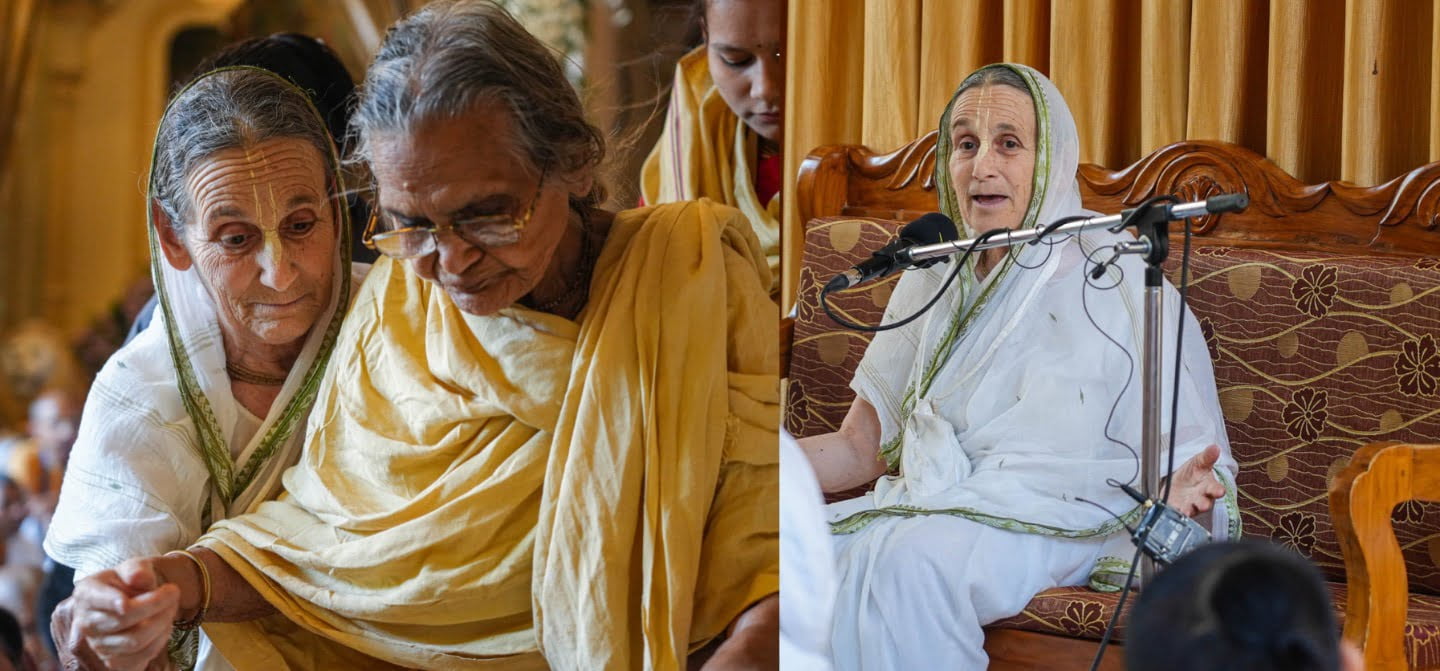Jagannath Temple Entry Forbidden: A Few Thoughts
By Madhavananda Das | Mar 03, 2017
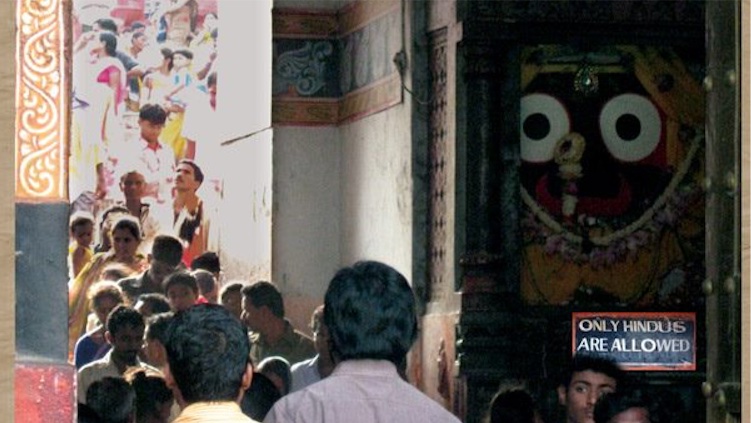
Recently I heard in the news about an ISKCON devotee named Govinda Dev Prabhu who was accused of trying to force his way into the temple of Jagannath here in Puri, and while doing so is said to have assaulted a panda (priest). Govinda Dev recently posted a video on youtube and on his Facebook page about this topic:
https://www.facebook.com/govinda.d….
Govinda Dev Prabhu clarified what happened and how some of the various news agencies offered reports that contained false and inflammatory information. He also presented a nice case for why foreign devotees should be allowed inside of the Jagannath Mandir and why it is sectarian and narrow minded for the pandas to bar persons not born in “Hindu” families from entering the temple.
Govinda Dev Prabhu if you are reading this, please accept my humble pranams. Thank you for sharing the video and for your devotion and concern for the situation at Lord Jagannath’s temple here in Puri. I appreciate your thoughtful comments.
I hope you don’t mind if I offer some observations that I have on this topic, both as a white skinned western bodied (aspiring) Vaishnava devotee as well as a researcher, writer and publisher on the topic of Jagannath culture.
When we hear about people being barred from entry into the temple of Jagannath, the all-loving Lord of the Universe, we naturally feel sad and hurt. However, I have found over the years here in Odisha that perhaps this policy is not as offensive and objectionable as one may think.
The 13th issue of our Sri Krishna Kathamrita magazine focused on this subject of, as they say here in Puri, videshi prabesh nished — “foreigners not allowed entry.” That issue is a compilation of research, and translations on the history, philosophy, culture, sastra, and local tradition of this controversial topic. On the cover of that edition we used a photo of Patita Pavan Jagannath at the Simhadvara gate. Above him is the magazine title, “The Most Merciful Lord”. Underneath him, using Photoshop we inserted a picture of one of the signs on the outside of the temple, “Only Hindus Allowed”.
It was a little tongue in cheek 🙂
We spent quite a bit of time and effort researching the origin of the official rule banning foreigners. While it is natural to feel angry with the pandas for being racist, what few people know is that this original rule banning foreigners entry to the temple, was established by the British — foreigners.
When the British forces arrived in Odisha in 1809 the country was under Maratha rule. Lord Wellesley, the then Governor General of the East India Company was an intelligent man. Understanding that only whoever, “had Jagannath on their side” would be able to ultimately rule Odisha, he sent a dispatch to Lieutenant Colonel Campbell, the commanding officer of the British forces in Odisha and instructed him to respect the priests in the temple as well as the deity of Jagannath.
Wellesly instructed Campbell not to disturb the priests in Puri in any way. He said that the property of Jagannath should be properly used with respect for the customs and prejudices of the Hindus. And, significantly, he told Campbell, “No person should enter into the pagoda without the desire of the brahmins.”
A few years later, in 1809 the British passed Section 7 of Regulation IV which barred entry for sixteen different low castes, such as shoe makers, street cleaners, prostitutes etc to the temple of Jagannath. That law continued until Indian independence in 1947. Just prior to Indian independence, Mahatma Gandhi and others began pushing for the lower castes of India to be allowed inside the Jagannath Mandir and other temples of India. In 1948, lower castes were first admitted to the Jagannath temple. However, the practice of barring various other people continued.
While it is easy to blame the pandas for their bigotry, if we look a little deeper into the tradition of Jagannath we find that some of the greatest, most prominent devotees of Jagannath were barred entry. This list would include, Haridas Thakur; Rupa and Sanatan Goswamis; Salabega who had a Vaishnavi mother and a Muslim father, and who is only second to Jayadev Goswami for writing the most famous and popular devotional songs in the history of Odisha to Jagannath; similarly the famous Odishan saint Balaram Das was banned from the temple; as was the great devotee Dasia Baurie, etc, etc. In short, here in Odisha some of the most famous and revered devotees have not been allowed entry to the temple.
However, it doesn’t stop there. Ramachandra Dev, the Gajapati king of Puri in the 1700s was barred entry after he was forcibly “converted” to Islam by Taki Khan a muslim general who captured him. Yet, much more startling than that is that according to the Laksmi Purana, a local Sanskrit scripture in Odisha, Lakshmi Devi herself was once locked out of the temple for the “offense” of going to the home of a low class person to bless her!
And it gets even more surprising. Every year Lord Jagannath himself is locked out of the temple! It’s a long story, but to cut to the quick, after Jagannath comes back from Ratha-yatra and his Vrindavan visit to his girlfriends, his wife Lakshmi Devi is not amused. She locks him out of the temple and there is a long drama that goes on until Jagannath is finally allowed inside again.
It’s not just the fault of the pandas. Jagannath Puri Dham is famous as Vipralambha-kshetra or the place of separation. Being locked out of the temple is one of the aspects of this very esoteric place. As Govinda Dev Prabhu commented, some persons consider that this rule banning foreign entry is the result of the influence of the Shankaracharya of Puri. Certainly the current Shankaracharya has a lot of influence here. However, it’s not at all a fact that therefore all of the pandas here are Mayavadis. For the most part they are Vaishnavas — but unlike the members of the Ramanuja and Madhva sampradayas, most of the pandas in Puri are to one degree or another, Gaudiya Vaishnavas who worship Sri Chaitanya Mahaprabhu.
Many of them chant the Hare Krishna mantra on beads. I even know of one panda who chants 64 rounds of japa every day before he goes to do his service of cooking for Jagannath. I also know of at least two pandas (names withheld) who want to take initiation from a prominent ISKCON (white skinned) guru.
The issue is not as simple as it may seem.
Regarding the Shankaracharya and the rule banning foreign entry, devotees may be happy to hear that in 1958 American-born Faye Wright was allowed entry to the temple. Born in Salt Lake City in a Mormon family, she was later initiated by Paramahamsa Yogananda and received the name Daya Mata. When she came to Puri in 1958, desirous of going inside the temple, she met with the then Shankaracharya of Puri, Bharat Krishna Tirtha, who, impressed with her “Hindu qualities”, recommended to the members of the Mukti Mandap that she be allowed inside. Daya Mata is considered to be the first “non-Hindu” to have officially been allowed entrance to the temple. However, in 1964 the Mukti Mandap went back to their traditional position when they denied entrance to several American members of the Ramakrishna Society.
Govinda Dev Prabhu, you also spoke a little about the apparently (from your comments) “ignorant” tradition of throwing away food if a foreigner happens to enter the temple. You may be surprised to know that this rule is a sastric principle from the Nīlādri-mahodaya another Sanskrit sthala-purāṇa, local scripture, that focuses on the worship and history of Lord Jagannath. The Nīlādri-mahodaya is considered by the paṇḍās, priests of the Puri temple, to be the highest authority on temple rituals. Therein it is stated:
kartavyaṁ mānavaiḥ sarvaiḥ adhikāra-yutaiḥ sadā / pramādāt yadi teṣāṁ vai praveśo ‘traiva jāyate
pāka-dravyaṁ ca yad vastu tatra-staṁ jala-saṁyutam / tat sarvaṁ dīrgha-khāteṣu nikṣipet tu prayatnataḥ
“If out of some mistake by the servants there, a mlechha enters the temple, then all the food stuffs that are prepared and other paraphernalia including water should be buried in a ditch.” (37.138-139)
Yet, as Govinda Dev appropriately pointed out, who is a Hindu? Who is a mleccha? Our revered spiritual master, Sri Srimad Gour Govinda Maharaja once said something to the effect, “The pandas bar entry to foreign devotees as they don’t accept that foreigners can become ‘Hindus’. Yet, at the same time there are many Hindus who are becoming Muslims. If this continues, what will be the end result for Hinduism?”
It’s natural to be hurt and offended when we see policies such as this rule at the Jagannath Mandir. However, from my humble perspective, it is a social issue, not a sastric matter. To give an example of this, Srila Bhaktivinode Thakur in Jaiva Dharma says that although a yavana mleccha can become an exalted Vaishnava, still they should not marry a girl from a Brahmin family. From a sastric point of view one may say, “What is the problem with such a marriage?” But Bhaktivinode’s point was not a sastric concern, it was a social one. In the society of India at that time it would be unheard of and very difficult (to say the least) for such a marriage to be accepted in society.
The pandas in Puri are special persons. Somehow they have the exalted piety to have been born as servitors of Lord Jagannath. However, many of them, including the unfortunate fellow Govinda Dev had a run-in with, have never had much, if any association with Western devotees. They don’t speak English and have heard many wild crazy rumors. It’s my conviction that as time goes by and they get to see the sincerity of the Western devotees they will accept them.
One panda told me that when the famous Muslim-Hindu saint Kabir Das came to Puri he was barred entry to the temple. The gentle Kabir Das didn’t quarrel with them, and went to a place near the beach to conduct his prayers. Later Jagannath came in a dream to the king of Puri and told him that he would not accept any offerings in the temple until his devotee Kabir Das was allowed entry. Jagannath also instructed the king that the pandas should carry Kabir Das inside the temple on their shoulders.
After this vision, the king along with a group of priests from the temple came to Kabir Das, and faithful to Jagannath’s order the pandas carried him on their shoulders into the temple. My panda friend concluded by telling me, “Madhavananda, we are not against you or any foreign devotees going inside. We just follow the order of Jagannath. If Jagannath says that you should come in, then like the pandas did with Kabir Das, we will personally carry you inside on our shoulders.”
I could see that he really meant it.
Govinda Dev mentioned that he was not sure if Srila Prabhupada entered the temple or not. As far as we know, in his youth Srila Prabhupada went inside a number of times. However, in 1977 when he came to Puri with a group of his Western and Indian bodied disciples he refused to go inside unless they would allow his followers entry. He also publicly chastised the pandas for committing offense to these foreign bodied devotees.
Later however, he commented to a disciple that he should not try to push his way inside the temple, but rather they should follow the mood of Haridas Thakur. In this way Srila Prabhupada publicly advocated that that foreign devotees should be allowed to enter, but on a personal level he instructed that one should be humble and tolerant.
Sri Chaitanya Mahaprabhu has taught the proper attitude towards seeing the Lord: adarśanān marma-hatāṁ karotu vā … mat-prāṇa-nāthas tu sa eva nāparaḥ — “Even if he makes me brokenhearted by not being present before me, he is always my worshipable Lord, unconditionally.”
Although apparently it seems that Jagannath is being cruel, from the absolute perspective, Jagannath’s policy is always one of mercy and kindness. He is truly patita-pāvana, the deliverer of the fallen. Being locked out of the temple is simply another intrinsic aspect of the amazing place called Jagannath Puri Dham. This sacred land is known as vipralambha-kṣetra, the abode of separation, the place where the devotees cry, jagannāthaḥ svāmī nayana-patha-gāmī bhavatu me — “May that Jagannath Swami, the Lord of the universe kindly, become visible to me.”
I personally don’t consider the policy of being barred entry as coming from the pandas. I see it as coming from Jagannath, the Lord of the Universe. Although, from one perspective it is a great injustice and offense, from another perspective it is a great blessing. To this, one may ask what is the Lord’s purpose in barring temple entry to some of his devotees? To understand this we can contemplate on the differences in Krishna’s dealings with his devotees in Vraja and in Dwarka. While it is widely accepted that Krishna showed more mercy to his Vrindavan devotees, one may protest, “It’s not true! Krishna left them and went to Dwarka. Unable to see Krishna, the residents of Vrindavan suffered and cried. Yet every day he gave his darśana to the residents of Dwarka. So it seems obvious that he was more merciful to the dvārakā-vāsīs.”
But was he?
In truth, Krishna showed more mercy to the residents of Vrindavan. In Srila Sanatan Goswami’s Bṛhad-bhāgavatāmṛta (1.7.1-6-107) Krishna describes what happens to the gopīs of Vrindavan while enduring his separation:
prāg yadyapi prema-kṛtāt priyāṇāṁ viccheda-dāvānala-vegato ‘ntaḥ
santāpa-jātena duranta-śoka-veśeṇa gāḍhaṁ bhavatīva duḥkham
tathāpi sambhoga-sukhād api stutaḥ sa ko ‘pi nirvacyatamo manoramaḥ
premoda-rāśiḥ pariṇāmato dhruvaṁ tatra sphuret tad rasikaika-vedyaḥ
Although in the forest fire of separation my gopī-beloveds are filled with pain, that pain is more glorious than the happiness of directly meeting me. It is indescribable and enchanting. It is an ocean of ecstatic love. Only those who are learned in tasting the mellows of divine love can understand it.
By leaving them and denying them his darśana, Krishna actually showed more mercy to the devotees of Vrindavan. Denying his devotees his direct association is a kind of abuse inflicted by the Lord. But this kind of abuse has a wonderful effect. It softens the hearts of the devotees. It makes them humble and causes them to cry for Krishna. In this way Krishna powerfully increases their attachment for him.
Jagannāthāṣṭakam says, aho dīne ‘nāthe nihita-caraṇo niścitam idaṁ — “Aho! It is certain that Lord Jagannath bestows his lotus feet upon those who feel themselves humbled and helpless.”
For myself, whether he abuses me, embraces me, gives me darshan, or refuses to come before me, Jagannath is the Lord of my life. I will happily wear his abuse as an ornament on my head.
My pranams to the saintly Govinda Dev Prabhu. Thank you again for sharing your thoughts with us on this volatile issue. This humble article is not presented as a refutation of anything you said, it is only offered as another perspective.




